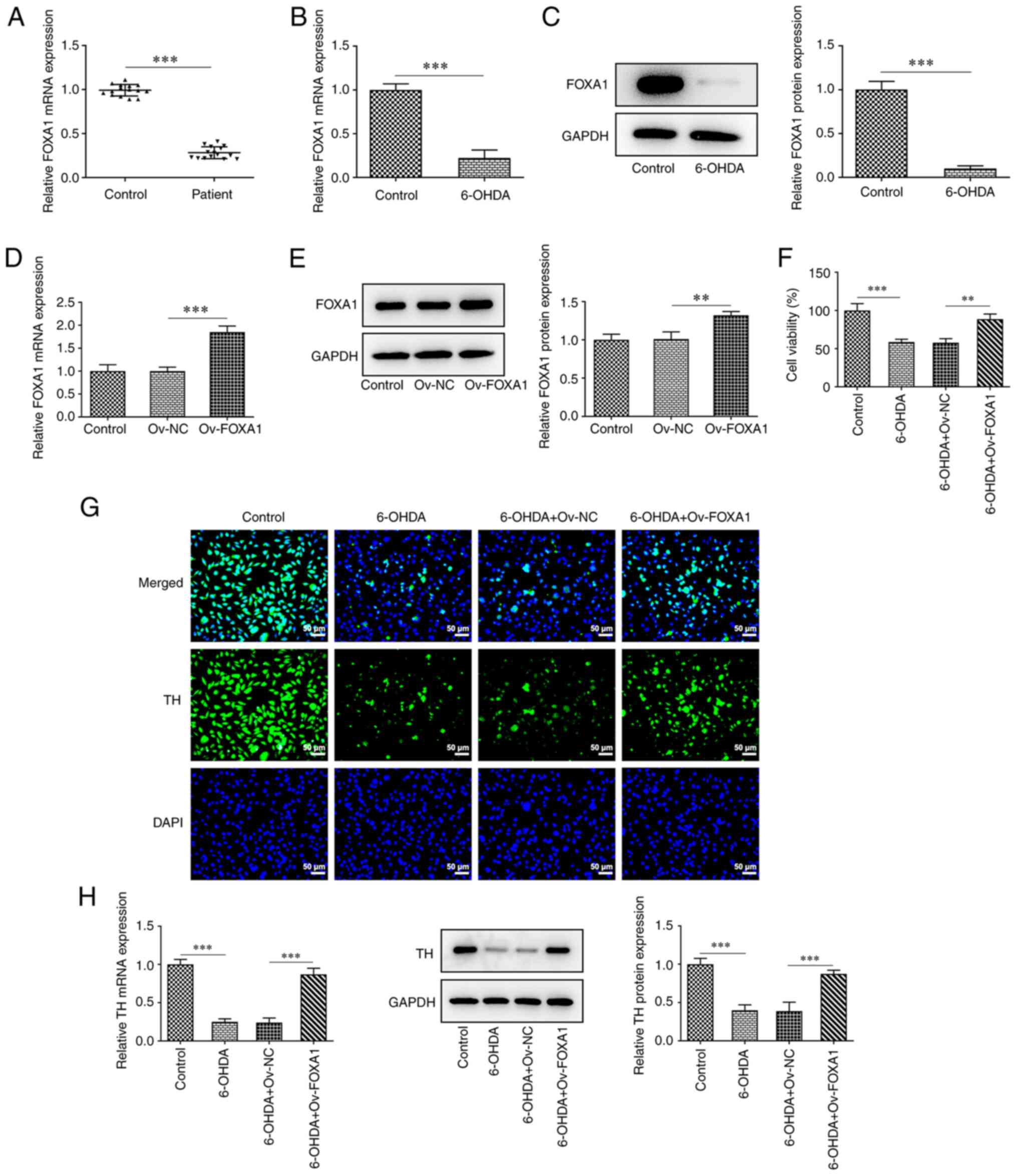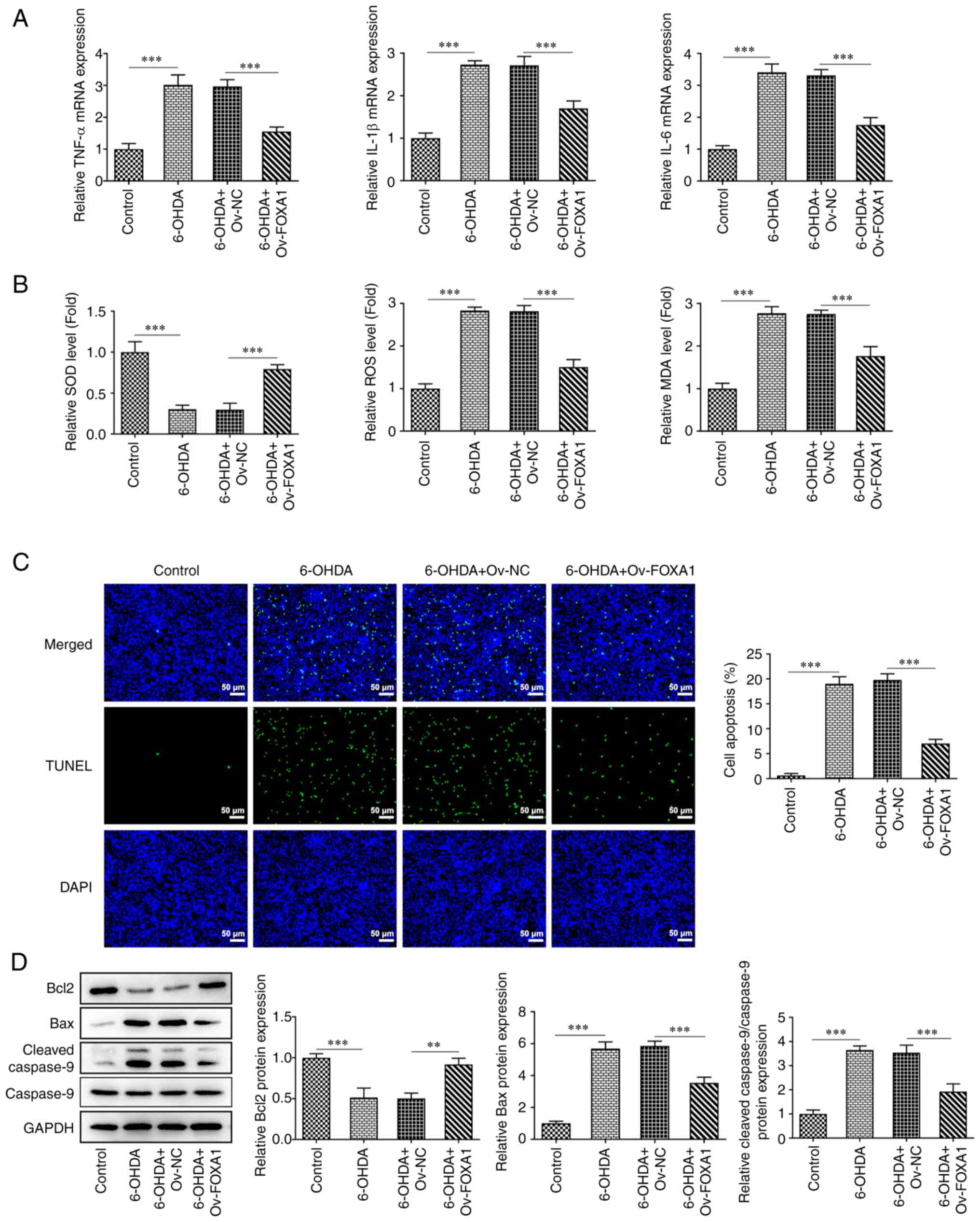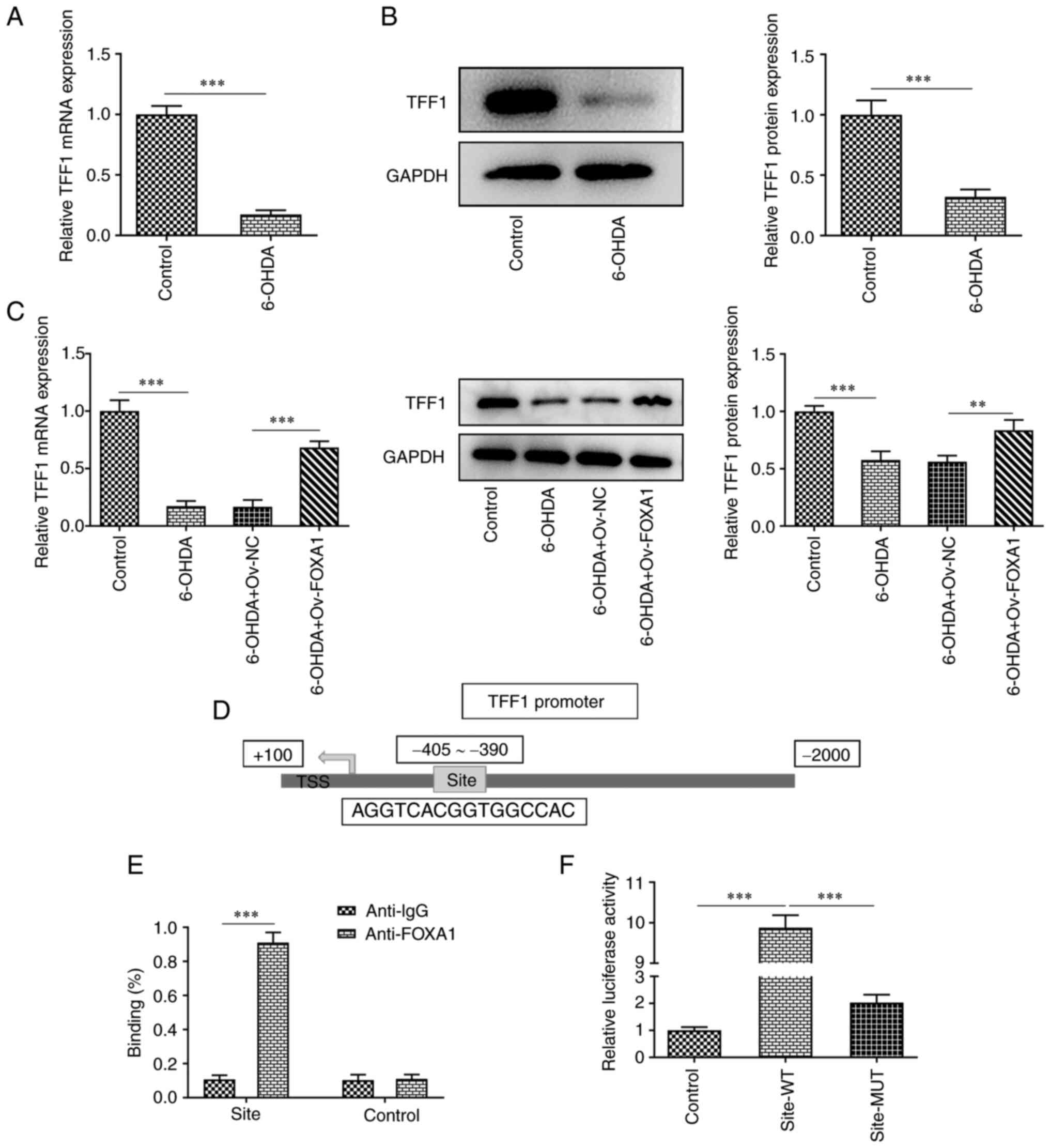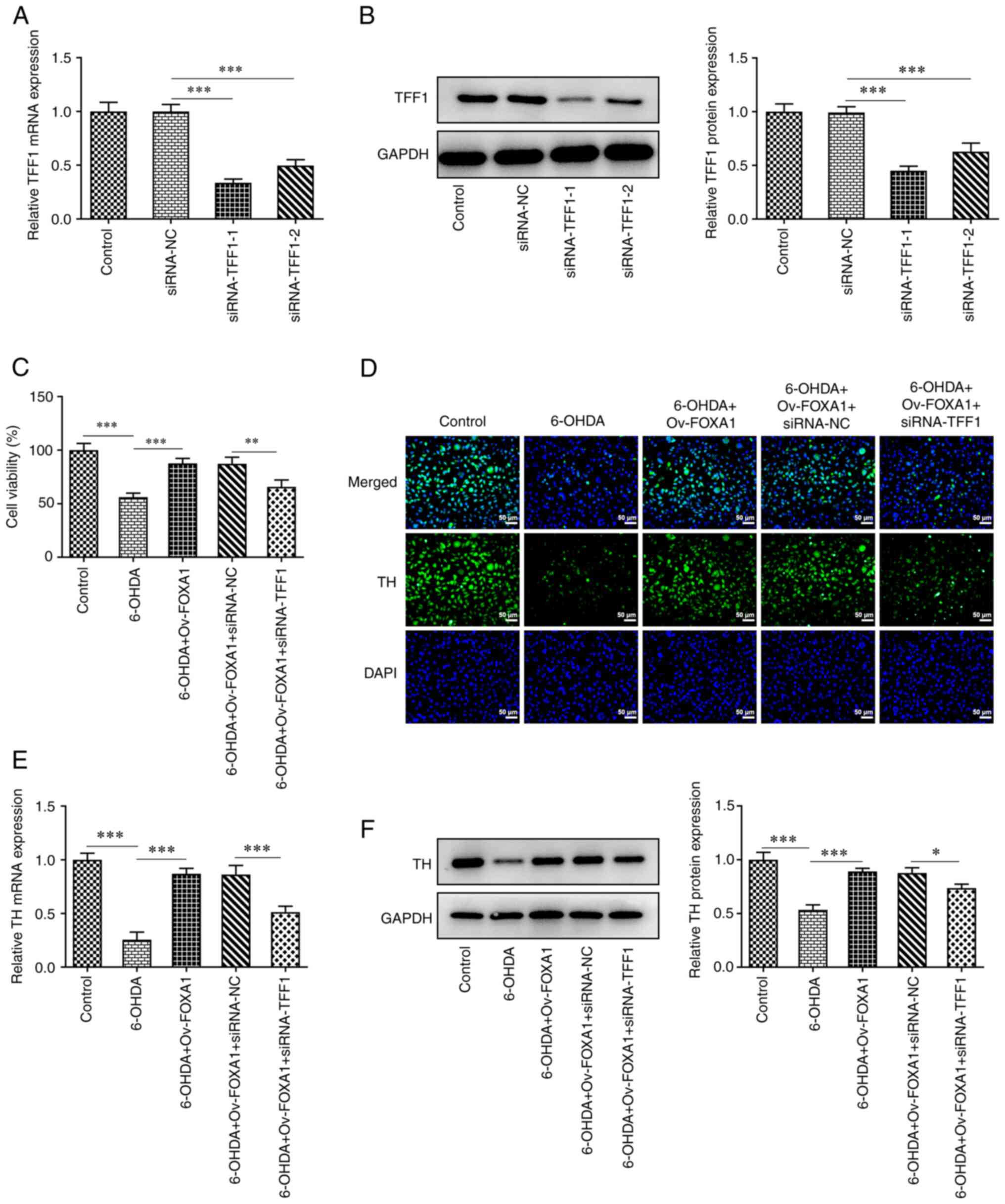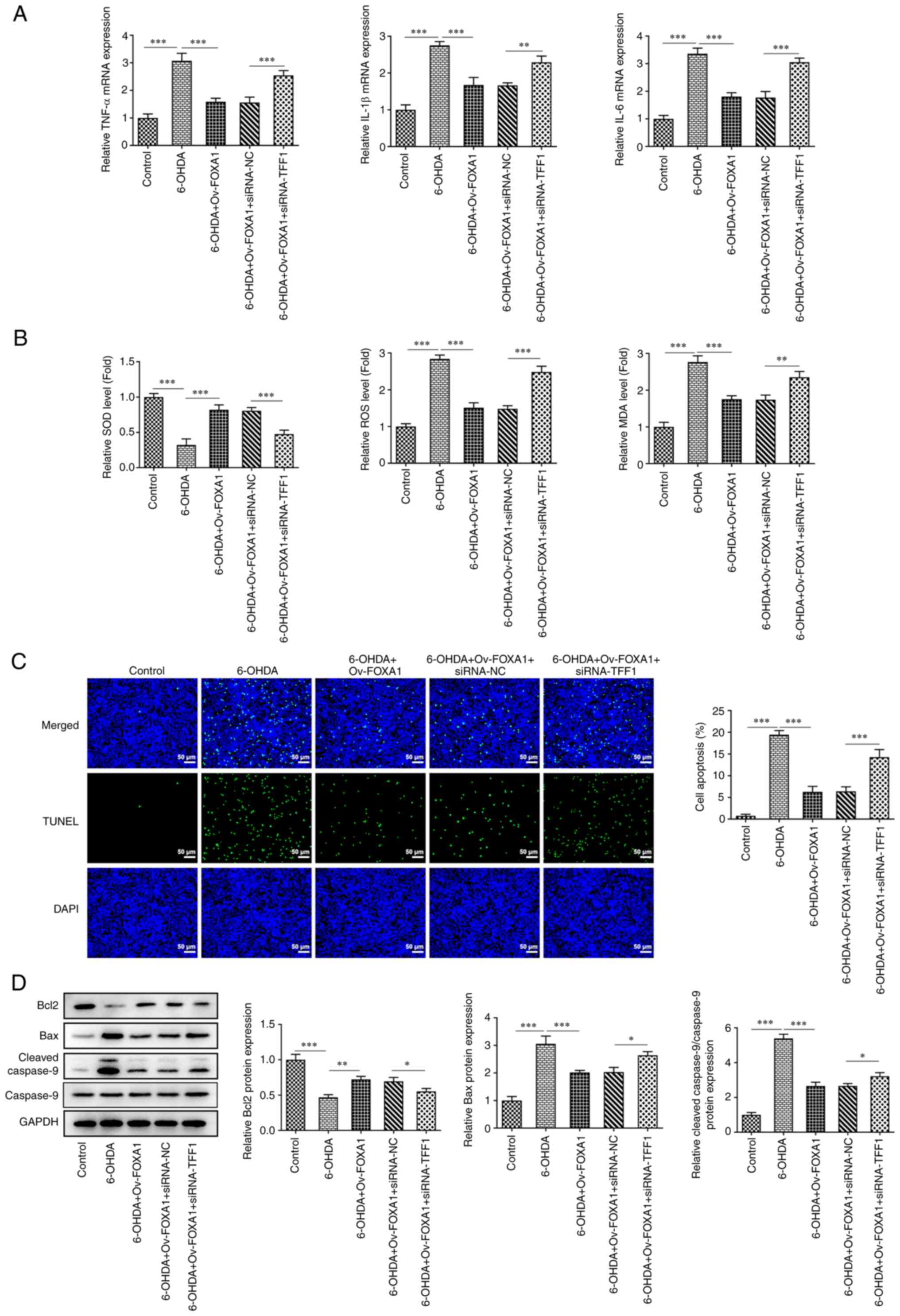|
1
|
Balestrino R and Schapira AHV: Parkinson
disease. Eur J Neurol. 27:27–42. 2020.PubMed/NCBI View Article : Google Scholar
|
|
2
|
Salari S and Bagheri M: In vivo, in vitro
and pharmacologic models of Parkinson's disease. Physiol Res.
68:17–24. 2019.PubMed/NCBI View Article : Google Scholar
|
|
3
|
Armstrong MJ and Okun MS: Diagnosis and
treatment of Parkinson disease: A review. JAMA. 323:548–560.
2020.PubMed/NCBI View Article : Google Scholar
|
|
4
|
Aarsland D, Batzu L, Halliday GM, Geurtsen
GJ, Ballard C, Ray Chaudhuri K and Weintraub D: Parkinson
disease-associated cognitive impairment. Nat Rev Dis Primers.
7(47)2021.PubMed/NCBI View Article : Google Scholar
|
|
5
|
López-Liria R, Parra-Egeda J, Vega-Ramírez
FA, Aguilar-Parra JM, Trigueros-Ramos R, Morales-Gázquez MJ and
Rocamora-Pérez P: Treatment of dysphagia in Parkinson's Disease: A
systematic review. Int J Environ Res Public Health.
17(4104)2020.PubMed/NCBI View Article : Google Scholar
|
|
6
|
Sodhi RK, Bansal Y, Singh R, Saroj P,
Bhandari R, Kumar B and Kuhad A: IDO-1 inhibition protects against
neuroinflammation, oxidative stress and mitochondrial dysfunction
in 6-OHDA induced murine model of Parkinson's disease.
Neurotoxicology. 84:184–197. 2021.PubMed/NCBI View Article : Google Scholar
|
|
7
|
De Virgilio A, Greco A, Fabbrini G,
Inghilleri M, Rizzo MI, Gallo A, Conte M, Rosato C, Ciniglio
Appiani M and de Vincentiis M: Parkinson's disease: Autoimmunity
and neuroinflammation. Autoimmun Rev. 15:1005–1011. 2016.PubMed/NCBI View Article : Google Scholar
|
|
8
|
Xu X, Fu Z and Le W: Exercise and
Parkinson's disease. Int Rev Neurobiol. 147:45–74. 2019.PubMed/NCBI View Article : Google Scholar
|
|
9
|
Dunkley PR and Dickson PW: Tyrosine
hydroxylase phosphorylation in vivo. J Neurochem. 149:706–728.
2019.PubMed/NCBI View Article : Google Scholar
|
|
10
|
Yang X, Zhu Z, Ding X, Wang X, Cui G, Hua
F and Xiang J: CaMKII inhibition ameliorated levodopa-induced
dyskinesia by downregulating tyrosine hydroxylase activity in an
experimental model of Parkinson's disease. Brain Res. 1687:66–73.
2018.PubMed/NCBI View Article : Google Scholar
|
|
11
|
Pristerà A, Lin W, Kaufmann AK,
Brimblecombe KR, Threlfell S, Dodson PD, Magill PJ, Fernandes C,
Cragg SJ and Ang SL: Transcription factors FOXA1 and FOXA2 maintain
dopaminergic neuronal properties and control feeding behavior in
adult mice. Proc Natl Acad Sci USA. 112:E4929–E4938.
2015.PubMed/NCBI View Article : Google Scholar
|
|
12
|
Horisawa K, Udono M, Ueno K, Ohkawa Y,
Nagasaki M, Sekiya S and Suzuki A: The dynamics of transcriptional
activation by hepatic reprogramming factors. Mol Cell.
79:660–676.e8. 2020.PubMed/NCBI View Article : Google Scholar
|
|
13
|
Gredler ML, Patterson SE, Seifert AW and
Cohn MJ: Foxa1 and Foxa2 orchestrate development of the urethral
tube and division of the embryonic cloaca through an autoregulatory
loop with Shh. Dev Biol. 465:23–30. 2020.PubMed/NCBI View Article : Google Scholar
|
|
14
|
Ruiz i Altaba A, Palma V and Dahmane N:
Hedgehog-Gli signalling and the growth of the brain. Nat Rev
Neurosci. 3:24–33. 2002.PubMed/NCBI View
Article : Google Scholar
|
|
15
|
Yu Q, Chen J, Deng W, Cao X, Adu-Frimpong
M, Yu J and Xu X: Neural differentiation of fibroblasts induced by
intracellular co-delivery of Ascl1, Brn2 and FoxA1 via a non-viral
vector of cationic polysaccharide. Biomed Mater.
13(015022)2017.PubMed/NCBI View Article : Google Scholar
|
|
16
|
Tippabathani J, Nellore J, Radhakrishnan
V, Banik S and Kapoor S: Identification of NURR1 (Exon 4) and FOXA1
(Exon 3) haplotypes associated with mRNA expression levels in
peripheral blood lymphocytes of Parkinson's patients in small
indian population. Parkinsons Dis. 2017(6025358)2017.PubMed/NCBI View Article : Google Scholar
|
|
17
|
Livak KJ and Schmittgen TD: Analysis of
relative gene expression data using real-time quantitative PCR and
the 2(-Delta Delta C(T)) method. Methods. 25:402–408.
2001.PubMed/NCBI View Article : Google Scholar
|
|
18
|
Jensen P, Heimberg M, Ducray AD, Widmer HR
and Meyer M: Expression of trefoil factor 1 in the developing and
adult rat ventral mesencephalon. PLoS One. 8(e76592)2013.PubMed/NCBI View Article : Google Scholar
|
|
19
|
Chen Z and Trapp BD: Microglia and
neuroprotection. J Neurochem. 136 (Suppl 1):S10–S17.
2016.PubMed/NCBI View Article : Google Scholar
|
|
20
|
Puspita L, Chung SY and Shim JW: Oxidative
stress and cellular pathologies in Parkinson's disease. Mol Brain.
10(53)2017.PubMed/NCBI View Article : Google Scholar
|
|
21
|
Vivekanantham S, Shah S, Dewji R, Dewji A,
Khatri C and Ologunde R: Neuroinflammation in Parkinson's disease:
Role in neurodegeneration and tissue repair. Int J Neurosci.
125:717–725. 2015.PubMed/NCBI View Article : Google Scholar
|
|
22
|
Pajares M, I Rojo A, Manda G, Boscá L and
Cuadrado A: Inflammation in Parkinson's disease: Mechanisms and
therapeutic implications. Cells. 9(1687)2020.PubMed/NCBI View Article : Google Scholar
|
|
23
|
Feuerstein D, Backes H, Gramer M, Takagaki
M, Gabel P, Kumagai T and Graf R: Regulation of cerebral metabolism
during cortical spreading depression. J Cereb Blood Flow Metab.
36:1965–1977. 2016.PubMed/NCBI View Article : Google Scholar
|
|
24
|
Deng H, Liu S, Pan D, Jia Y and Ma ZG:
Myricetin reduces cytotoxicity by suppressing hepcidin expression
in MES23.5 cells. Neural Regen Res. 16:1105–1110. 2021.PubMed/NCBI View Article : Google Scholar
|
|
25
|
Taysi S, Tascan AS, Ugur MG and Demir M:
Radicals, oxidative/nitrosative stress and preeclampsia. Mini Rev
Med Chem. 19:178–193. 2019.PubMed/NCBI View Article : Google Scholar
|
|
26
|
Islam MT: Oxidative stress and
mitochondrial dysfunction-linked neurodegenerative disorders.
Neurol Res. 39:73–82. 2017.PubMed/NCBI View Article : Google Scholar
|
|
27
|
Papavassiliou KA and Papavassiliou AG:
Transcription factor drug targets. J Cell Biochem. 117:2693–2696.
2016.PubMed/NCBI View Article : Google Scholar
|
|
28
|
Lambert M, Jambon S, Depauw S and
David-Cordonnier MH: Targeting transcription factors for cancer
treatment. Molecules. 23(1479)2018.PubMed/NCBI View Article : Google Scholar
|
|
29
|
Lin W, Metzakopian E, Mavromatakis YE, Gao
N, Balaskas N, Sasaki H, Briscoe J, Whitsett JA, Goulding M,
Kaestner KH and Ang SL: Foxa1 and Foxa2 function both upstream of
and cooperatively with Lmx1a and Lmx1b in a feedforward loop
promoting mesodiencephalic dopaminergic neuron development. Dev
Biol. 333:386–396. 2009.PubMed/NCBI View Article : Google Scholar
|
|
30
|
Ang SL: Foxa1 and Foxa2 transcription
factors regulate differentiation of midbrain dopaminergic neurons.
Adv Exp Med Biol. 651:58–65. 2009.PubMed/NCBI View Article : Google Scholar
|
|
31
|
Clyne M and May FEB: The interaction of
helicobacter pylori with TFF1 and its role in mediating the tropism
of the bacteria within the stomach. Int J Mol Sci.
20(4400)2019.PubMed/NCBI View Article : Google Scholar
|
|
32
|
Hu J, Shi Y, Wang C, Wan H, Wu D, Wang H
and Peng X: Role of intestinal trefoil factor in protecting
intestinal epithelial cells from burn-induced injury. Sci Rep.
8(3201)2018.PubMed/NCBI View Article : Google Scholar
|
|
33
|
Soutto M, Chen Z, Bhat AA, Wang L, Zhu S,
Gomaa A, Bates A, Bhat NS, Peng D, Belkhiri A, et al: Activation of
STAT3 signaling is mediated by TFF1 silencing in gastric neoplasia.
Nat Commun. 10(3039)2019.PubMed/NCBI View Article : Google Scholar
|
|
34
|
Yi J, Ren L, Li D, Wu J, Li W, Du G and
Wang J: Trefoil factor 1 (TFF1) is a potential prognostic biomarker
with functional significance in breast cancers. Biomed
Pharmacother. 124(109827)2020.PubMed/NCBI View Article : Google Scholar
|















